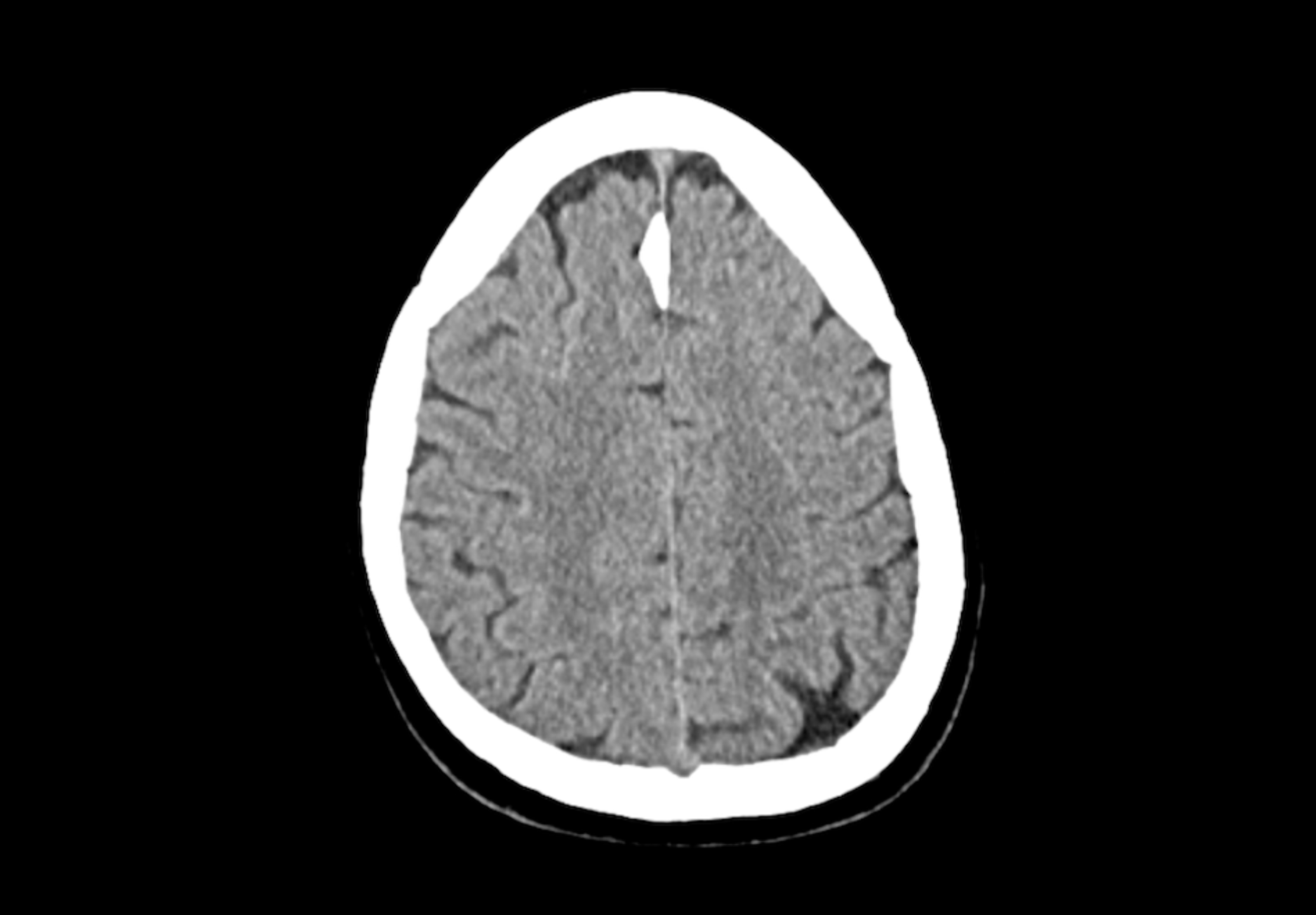After having a headache for nearly a week I figured I should get it checked out at the local GP. Thanks to having a somewhat decent health system in place, I had a CT scan just one hour later. Having a history in human biomedical science I did some looking about but couldn’t see anything that stuck out, well except for the big diagnostically irrelevant but neat looking, calcified falx cerebri.
The CT scans provided have two “modes”. Brain window and bone window. Above is brain window mode with better detail of the brain. The falx cerebri visible as bright white. After a quick anatomy refresher, the falx cerebri separates the left and right hemispheres at the very top of the brain. In my case it has turned to bone (via ossification/calcification) for whatever reason. Relatively rare but benign.
Next we have bone window mode, where you can see the bone detail but not so much the brain squiggly mush bits, I want to say spaghetti? The falx cerebri appears to be made of the same structure as the skull itself. But it doesn’t connect to the skull. Cool science!
Unfortunately, none of this helps my headache. To make matters worse, this headache doesn’t seem to be affected by ibuprofen, naproxen or paracetamol. I need to be doing other things in this down time but I can’t think straight for long before my head starts to hurt. Is it stress? Probably. My eye twitch disappeared just before this started… last Wednesday. 😅
I love pattern recognition though, is that a happy axolotl hiding in my vertebrae? A little less spooky than the other image with the eyeballs. Here’s the full report from the doctor.
Technique:
Non-contrast study of the head and cervical spine was performed and the images were reviewed in multiple planes.
Findings:
Brain
There is normal attenuation of the brain with normal grey-white matter interface. There is no acute intracranial bleed or established acute infarct.
Ventricles are non-dilated. There is incidental finding of CVI (cavum velum interpositum- anatomic variation), that measures up to 18 mm transverse the medial and 15 mm craniocaudal with convex margins indicating some degree of mass effect. Consider further imaging with MRI. There is no brain oedema, or midline shift.
The rest of the CSF spaces define normally.
The bone window images of the skull do not reveal any abnormality.
Cervical Spine
There is normal alignment of the cervical vertebrae.
The facet joints show normal articulation.
The odontoid is intact and normal in position. The CV junction and atlantoaxial articulation are normal. There is congenital nonfusion of the posterior arch of C1.
There is no significant disc osteophyte complex or spinal canal stenosis. There is no neural foraminal narrowing.
The cervicothoracic junction is in normal alignment.
There is no prevertebral or paraspinal collection.
Conclusion:
No significant intracranial pathology. Incidental finding of anatomic variation that may need further characterisation with MRI to assess for any CSF flow abnormality.
No significant cervical spine pathology.



